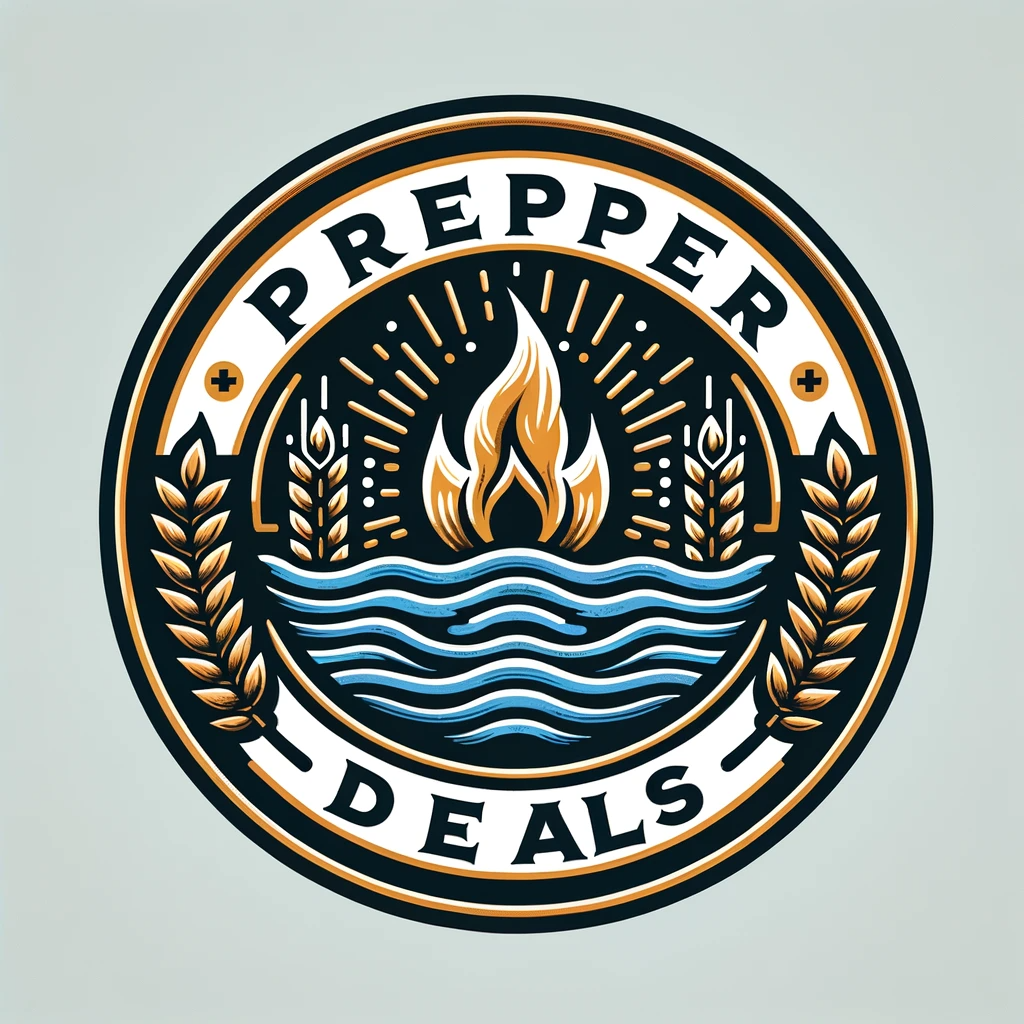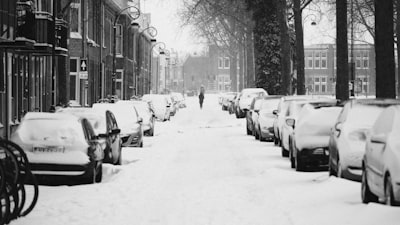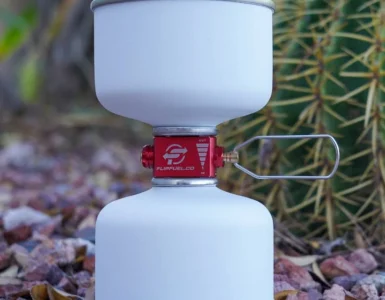Winter storms can be beautiful to look at, but they can also bring hazardous risks and create chaos in our daily lives. It is crucial to prepare for these events before they hit. In this blog post, we will cover everything you need to know about winter storms- from understanding the different types of winter storms and their associated dangers, to pre-storm preparation steps that are essential for your safety and well-being. We have also included safety measures that you need to take during the storm and tips for dealing with post-storm situations. Our aim is to provide you with a comprehensive guide so that you can be ready for anything this winter season throws your way. Stay safe and warm by following our winter storm preparation checklist, tips, and tricks!
Understanding Winter Storms and Their Risks
Winter storms encompass extreme cold, high winds, heavy snowfall, and ice, posing risks to safety. Carbon monoxide detectors are vital during such conditions. Recognizing hypothermia signs is crucial for personal safety. Winter storms can cause damage to tree branches, power lines, and fuel lines. Understanding the signs and basic treatments for frostbite and hypothermia is important for cold winter weather. This knowledge can help in safeguarding against potential dangers associated with winter storms.
Types of Winter Storms and Associated Dangers
Understanding the dangers associated with different types of winter storms is crucial for ensuring personal safety and preparedness. Winter storms can result in power outages, increased heating costs, and significant inconveniences. Being prepared for heavy snowfall during the winter season is essential. Warm clothing, emergency supplies, and extra batteries are vital for winter storm preparation. It’s also important to be aware of the risks of carbon monoxide exposure, heart attacks due to overexertion while shoveling snow, and memory loss caused by cold winter temperatures. Stay informed through emergency alerts, weather reports, and information from sources such as the national oceanic and atmospheric administration to navigate winter weather conditions effectively.
Pre-Winter Storm: Actionable Preparation Steps
Before a winter storm arrives, it’s important to be prepared for potential hazards. Start by having a first aid kit, bottled water, and some food on hand for emergency supplies. Ensure you have a warm location, warm clothes, and supplemental heaters ready. Additionally, check battery backups, windshield wipers, and jumper cables before the winter season. Having gallons of water, warm water, and a warm place is essential for winter storm preparation. Don’t forget emergency kits, good ideas, and warm clothing to stay ready for any winter storm.
Gathering Essential Emergency Supplies
When preparing for a winter storm, gathering essential emergency supplies like warm clothing and a warm place is crucial. It’s important to have a water supply, emergency kit, and warm clothes ready. Ensuring you have access to warm water, a warm location, and warm clothes is vital for winter storm preparation. Keeping a water supply, emergency kit, and warm place is necessary to stay safe and comfortable during the cold winter months. Remember, having essential emergency supplies is key to being prepared for any winter storm.
Making Your Home Winter-Ready
Preparing your home for winter involves understanding heating costs, body heat, and winter weather. It’s crucial to utilize body heat, warm clothes, and a warm place during winter conditions. Ensuring a warm location, warm clothes, and body heat is essential for winter storm preparation. By focusing on body heat, warm clothing, and a warm place, you can effectively make your home winter-ready. This will help you combat the cold winter weather and stay safe and comfortable indoors.
Learn Emergency Skills
Understanding the importance of first aid, emergency information, and emergency supplies is crucial during a winter storm. It’s essential to have a comprehensive understanding of emergency information, a well-equipped first aid kit, and essential emergency supplies. Knowing how to administer first aid, having emergency supplies readily available, and being well-informed about emergency procedures can significantly impact your safety during a cold winter. The national oceanic and atmospheric administration recommends being prepared for any eventuality by ensuring you are adequately equipped with emergency supplies.
Learn the signs of, and basic treatments for, frostbite and hypothermia.
Recognizing the indications of hypothermia, heart attack, and frostbite is crucial for winter safety. Understanding the symptoms of hypothermia, heart attack, and carbon monoxide is essential for proper preparation. It’s important to be able to identify signs of hypothermia, heart attack, and memory loss to take appropriate action. Recognizing these signs is necessary for maintaining personal safety and health during cold winter conditions. Understanding the impact of low temperatures on the human body is vital for winter storm preparedness.
Safety Measures During the Winter Storm
Ensuring safety during a winter storm involves having emergency supplies, warm clothing, and a secure location. It’s essential to prepare an emergency kit, gather warm clothes, and identify a warm place for shelter. Ensuring the availability of emergency supplies, a warm location, and appropriate clothing is crucial for protecting oneself during a cold winter storm. This is in line with recommendations from the National Oceanic and Atmospheric Administration (NOAA) for maintaining personal safety and health during extreme weather conditions.
Ensuring Personal Safety and Health
Amid a winter storm, safeguard yourself from high winds, wet clothing, and uncontrollable shivering. Address personal safety by being cautious of carbon monoxide, memory loss, and essential emergency information. Prioritize personal well-being by considering the dangers of carbon monoxide exposure, heart attacks, and staying informed with a weather radio. Protection measures include being vigilant of heart attacks, carbon monoxide poisoning, and having essential emergency information readily available. Remember, prioritizing personal safety, addressing memory loss concerns, and staying informed with a weather radio are vital during a winter storm.
Generator Safety
When working with generators, it’s crucial to prioritize safety. This involves being cautious with fuel lines, the gas tank, and power lines to prevent any mishaps. Ensuring the safe use of generators means paying attention to the center of the body, especially in cold winter conditions, to avoid any health risks. Additionally, following guidelines from the National Oceanic and Atmospheric Administration can help in maintaining generator safety during a winter storm.
How to Deal with Post-Winter Storm Situations?
Assess your surroundings for hazards and check the condition of your heating system and water supply. Clear snow and ice to prevent accidents, ensure the proper functioning of emergency supplies, and carbon monoxide detectors. Stay updated with local government for additional information and alerts.
Recovery Tips
After a winter storm, it’s crucial to document any damage with photographs for insurance claims. Older adults should be monitored for signs of hypothermia, memory loss, or heart attack. Replenish emergency supplies like bottled water, granola bars, and extra batteries. Seek professional help to restore power lines, gas tank, fuel lines, and cover heating costs. Stay informed about weather conditions through the national oceanic and atmospheric administration weather radio and local reports.
Download Winter Storm Checklists and Fact Sheets
Accessing noaa weather radio and emergency information is crucial for staying informed during a winter storm. Prepare a winter storm emergency kit, which should include warm clothing, battery backups, and first aid supplies to ensure you are ready for any situation. Download fact sheets online to educate yourself about emergency alerts, winter weather, and solutions for power outages. Additionally, gather information on using body heat, warm water, space heaters, and other heating sources to maintain the center of the body’s warmth. Understanding the significance of uncontrollable shivering and cold winter safety measures is essential for staying safe during a winter storm.
Frequently Asked Questions
What are the essential items to have in a winter storm emergency kit?
In a winter storm emergency kit, it is crucial to include non-perishable food, water, blankets, and a first aid kit. Additionally, pack flashlights, batteries, a battery-powered radio, and extra clothing. Remember to personalize your kit with specific items like medications or baby supplies. Check and update the kit annually before winter starts.
How can I prepare my home for a winter storm?
To prepare your home for a winter storm, insulate doors and windows to prevent drafts. Keep emergency supplies like blankets, non-perishable food, and water ready. Check and service your heating system beforehand, and have a backup generator or alternative heat source in case of power outages.
What should I do before a winter storm hits?
Before a winter storm hits, it’s important to take proactive steps to ensure your safety. Stock up on non-perishable food, water, and emergency supplies like flashlights and blankets. Insulate your home and seal any gaps in windows and doors. Have a backup heating source and an emergency kit in your vehicle.
What are some safety tips to follow during a winter storm?
During a winter storm, it’s important to stay indoors if possible and avoid unnecessary travel. Make sure you have non-perishable food, water, and medications on hand in case of power outages or road closures. Dress warmly and be cautious with alternative heating sources like generators or space heaters.
How do I protect my car from a winter storm?
To protect your car from a winter storm, try to park it in a garage or covered area. If that’s not possible, use a waterproof cover to shield it from the elements. Make sure to use winter-grade windshield wiper fluid and keep an emergency kit with blankets, flashlight, and warm clothing in your car.
How can I keep myself and my family warm during a power outage caused by a winter storm?
To stay warm during a power outage caused by a winter storm, dress in layers and use blankets. If possible, utilize a generator or alternate heating source. Close off unneeded rooms to conserve heat, but remember to avoid using outdoor grills or gas stoves inside the house, as they can produce dangerous carbon monoxide.
Is it important to have an evacuation plan in case of a severe winter storm, and how can I create one?
Having an evacuation plan in case of a severe winter storm is crucial. Ensure your plan includes a designated meeting spot and emergency contacts. Research potential evacuation routes and shelters in advance. Practice the plan with your family or household members to ensure everyone knows what to do.
What are some common mistakes people make when preparing for a winter storm, and how can they be avoided?
Common mistakes people make when preparing for a winter storm include waiting until the last minute, not having enough food and water stocked up, and neglecting to check their heating system. To avoid these mistakes, it’s crucial to plan ahead, have emergency supplies ready, and perform necessary maintenance beforehand.
Ensure Your Familiy’s Safety During a Winter Storm
Winter storms can bring about dangerous conditions and it is essential to be prepared. By following the checklist provided, you can ensure the safety of yourself and your loved ones during these challenging times. Remember to gather emergency supplies, make your home winter-ready, and learn essential skills to handle emergency situations. During the storm, prioritize personal safety and health, and be cautious when using generators. After the storm passes, take necessary steps for recovery and stay informed with our downloadable checklists and fact sheets. To receive more informative and practical tips, subscribe to our newsletter and stay updated on all things related to winter storm preparation. Stay safe and be well-prepared!
RESOURCES:
https://www.ready.gov/home-fires
https://community.fema.gov/ProtectiveActions/s/article/Winter-Storm

















